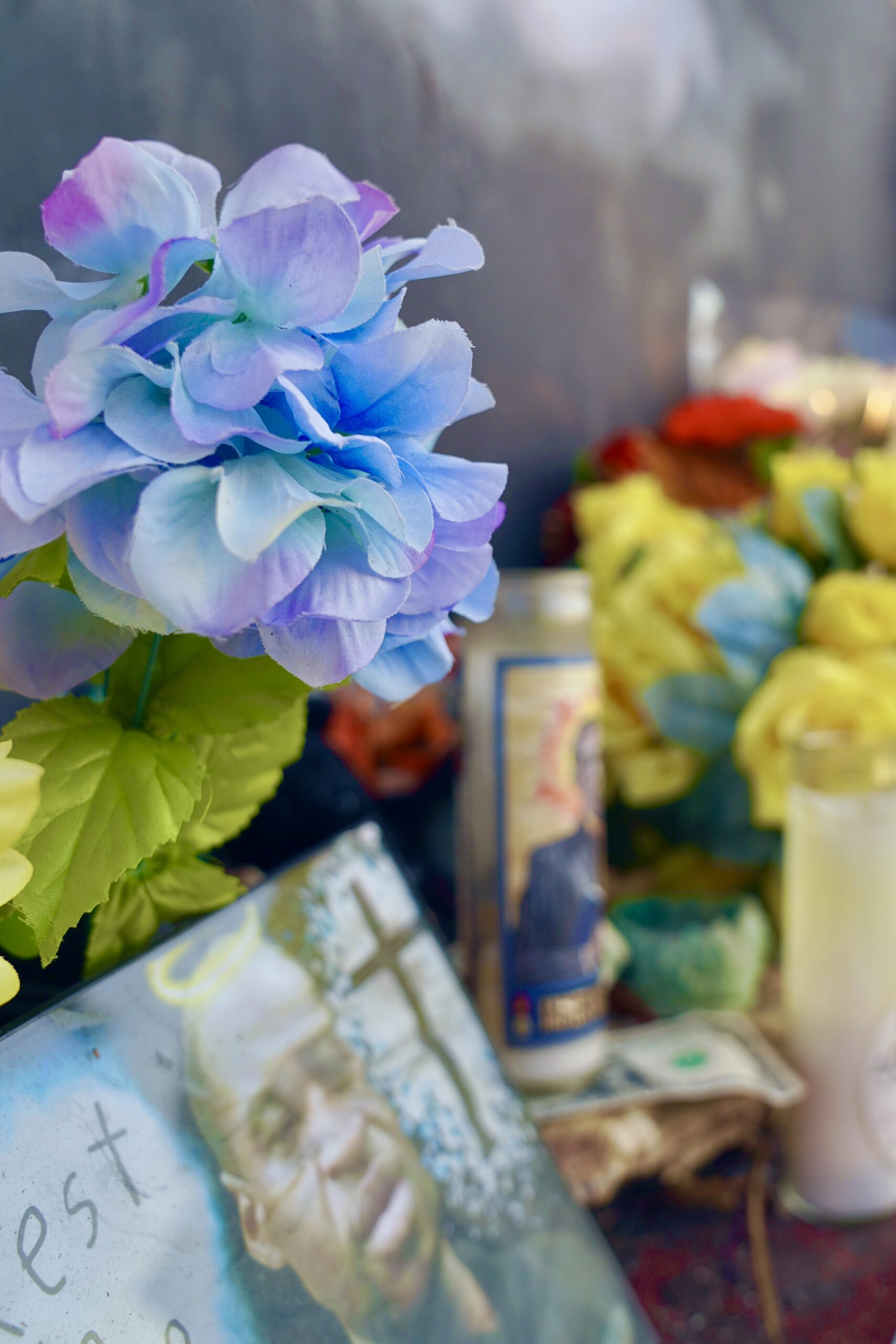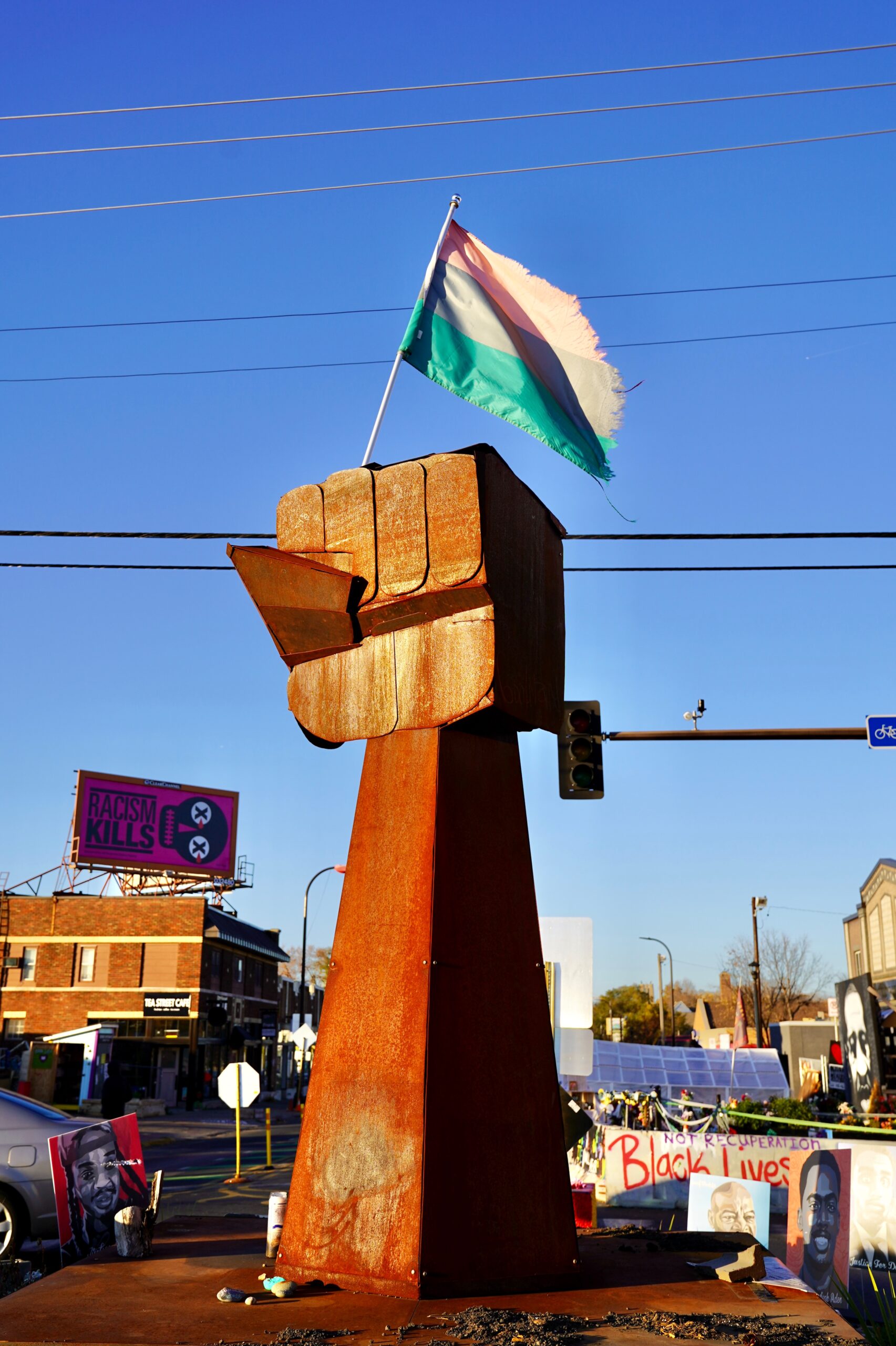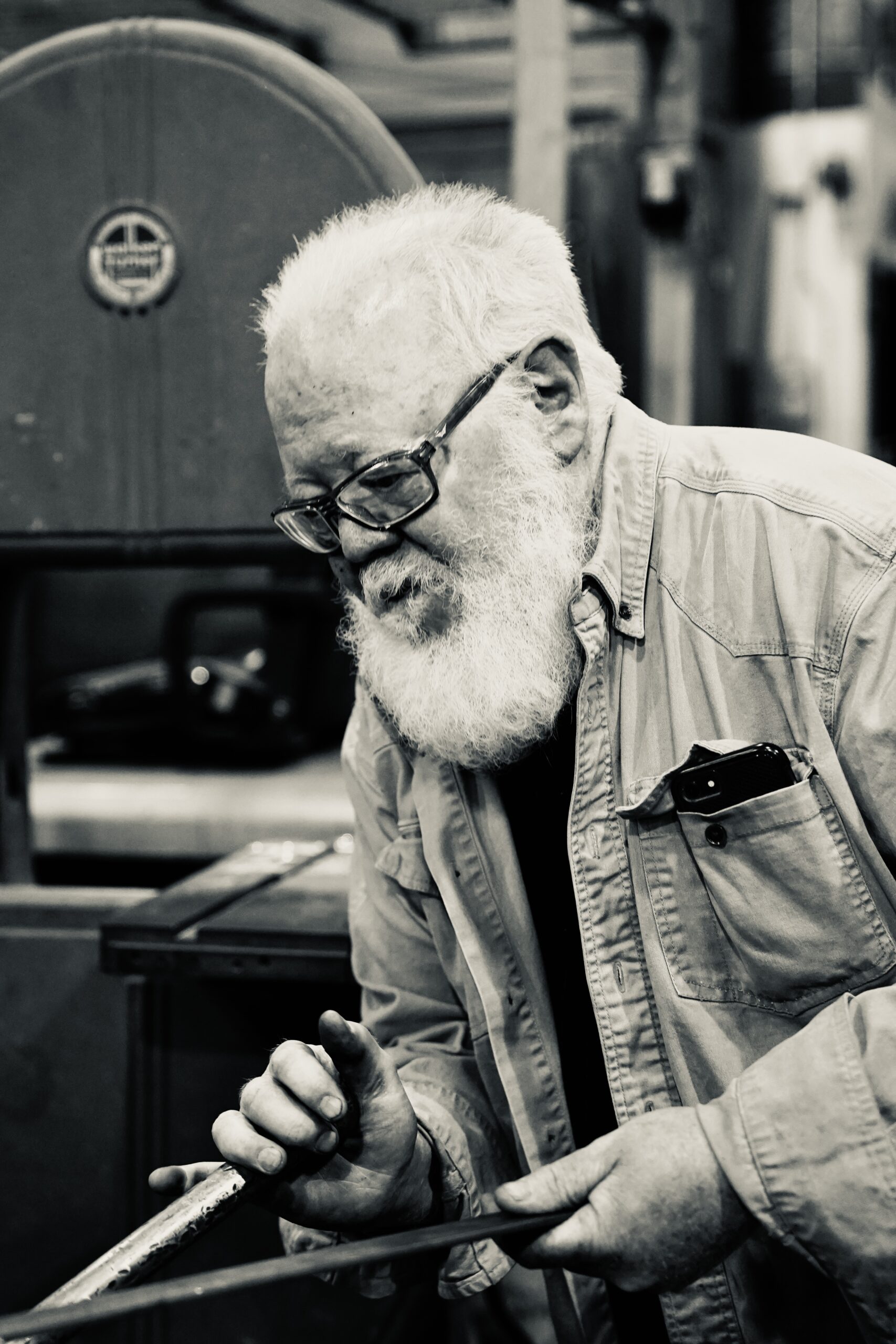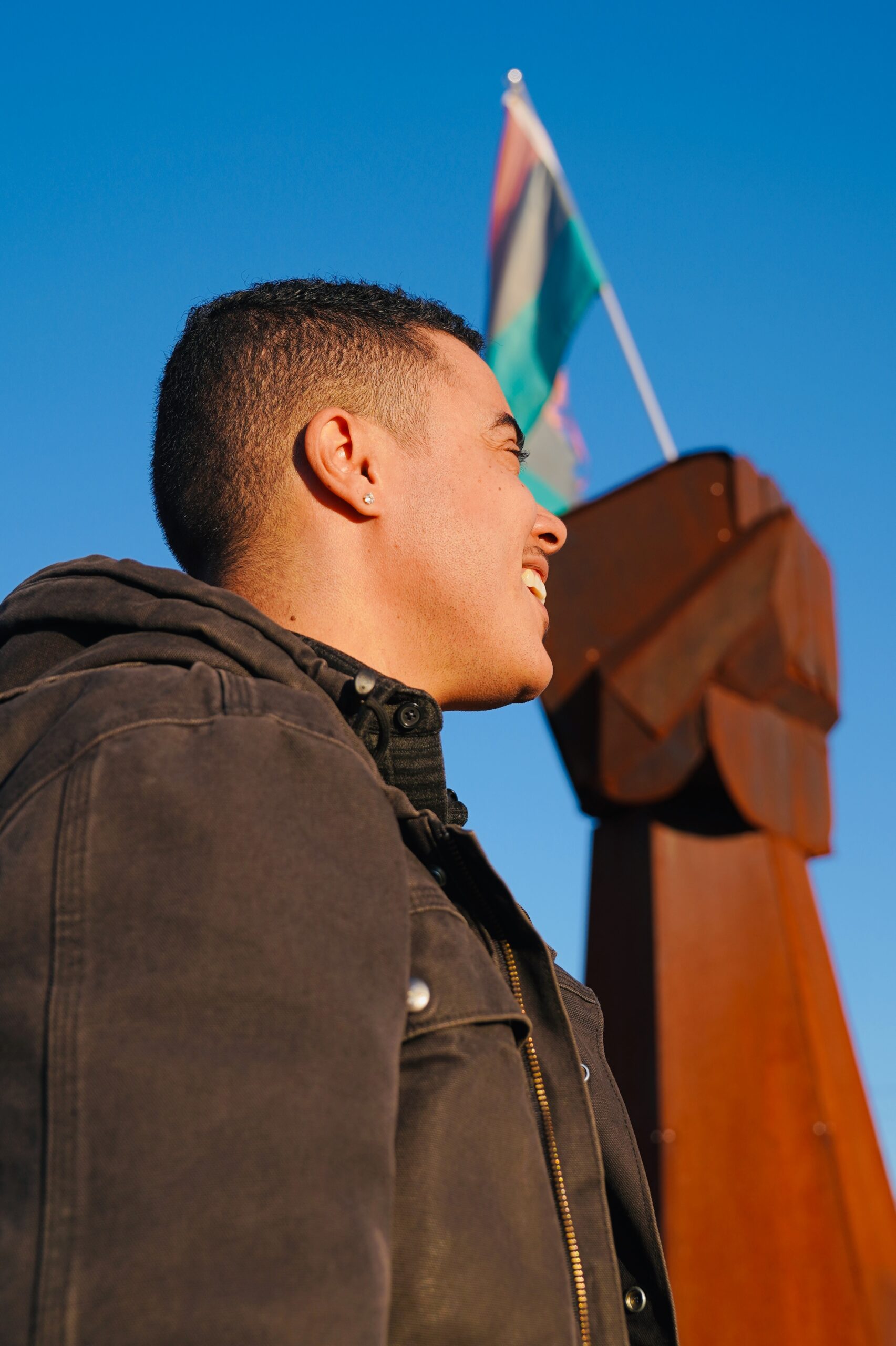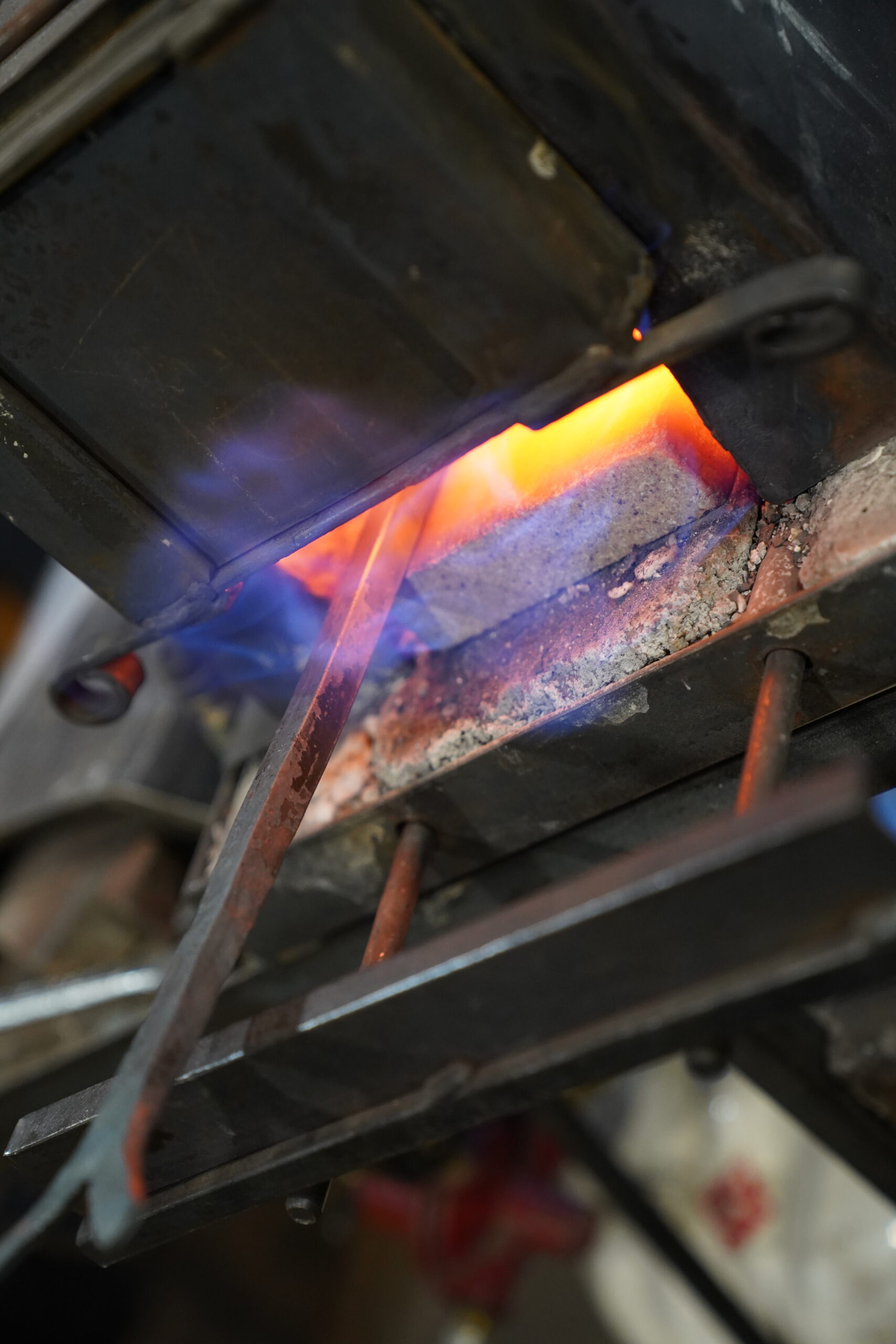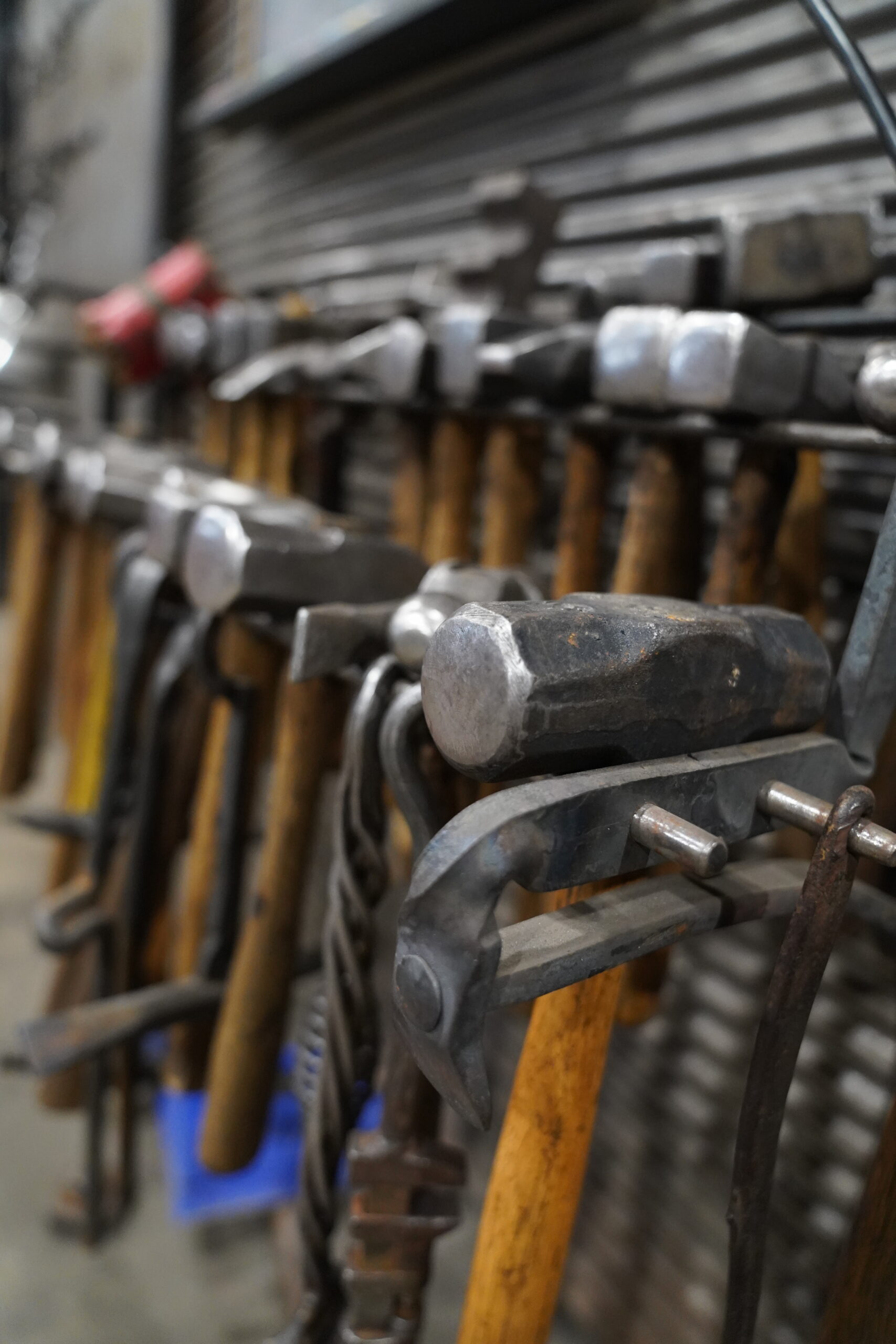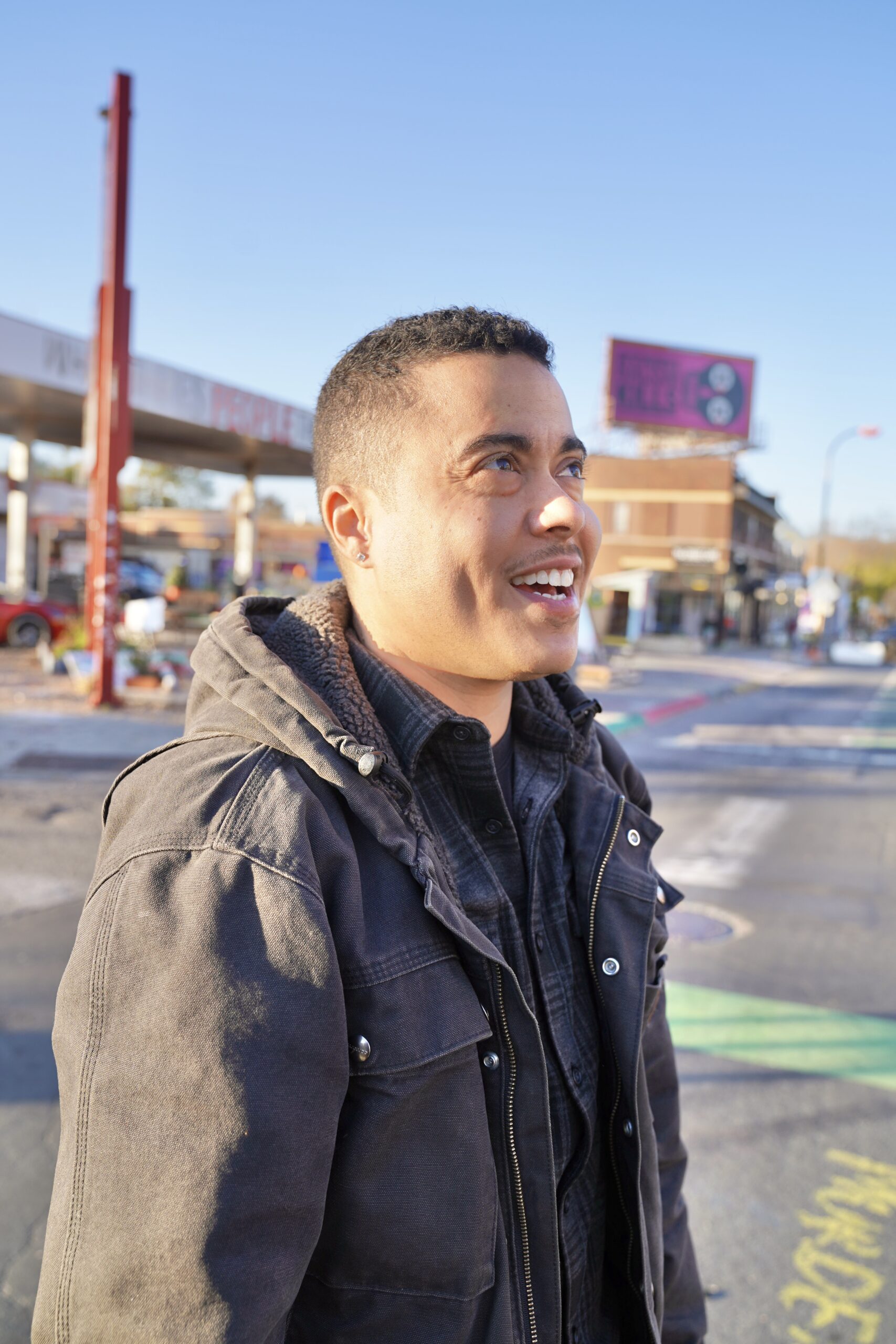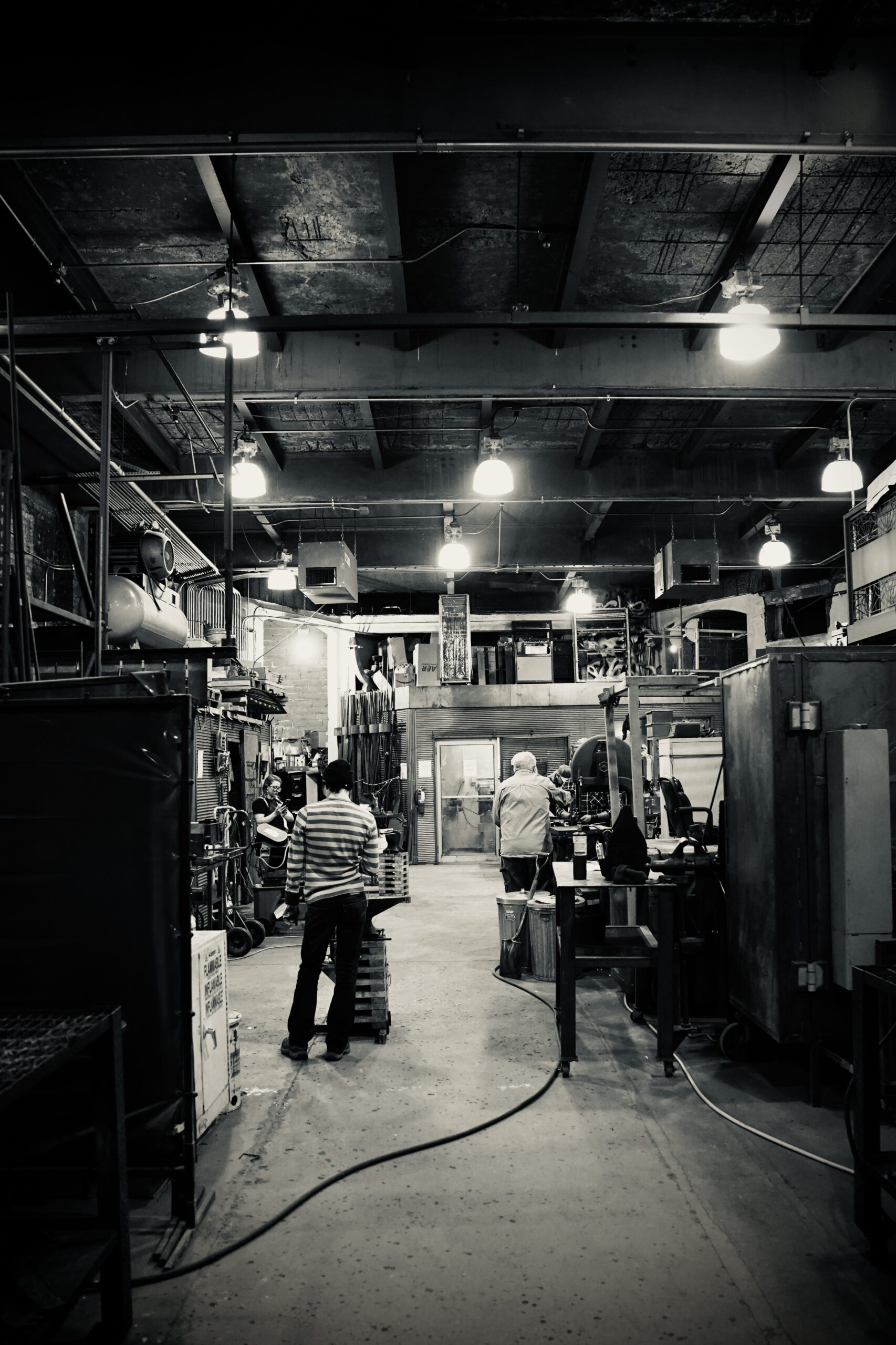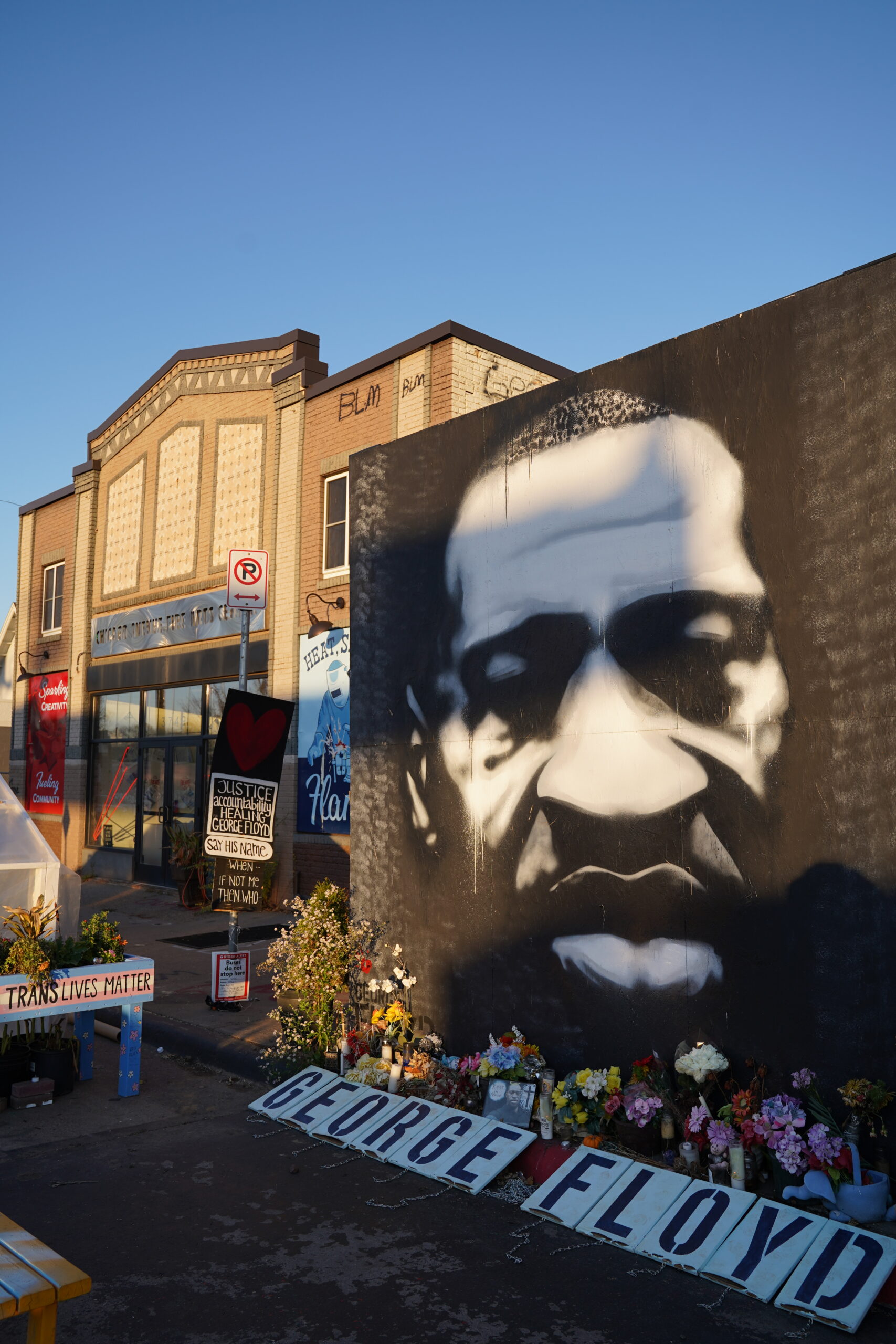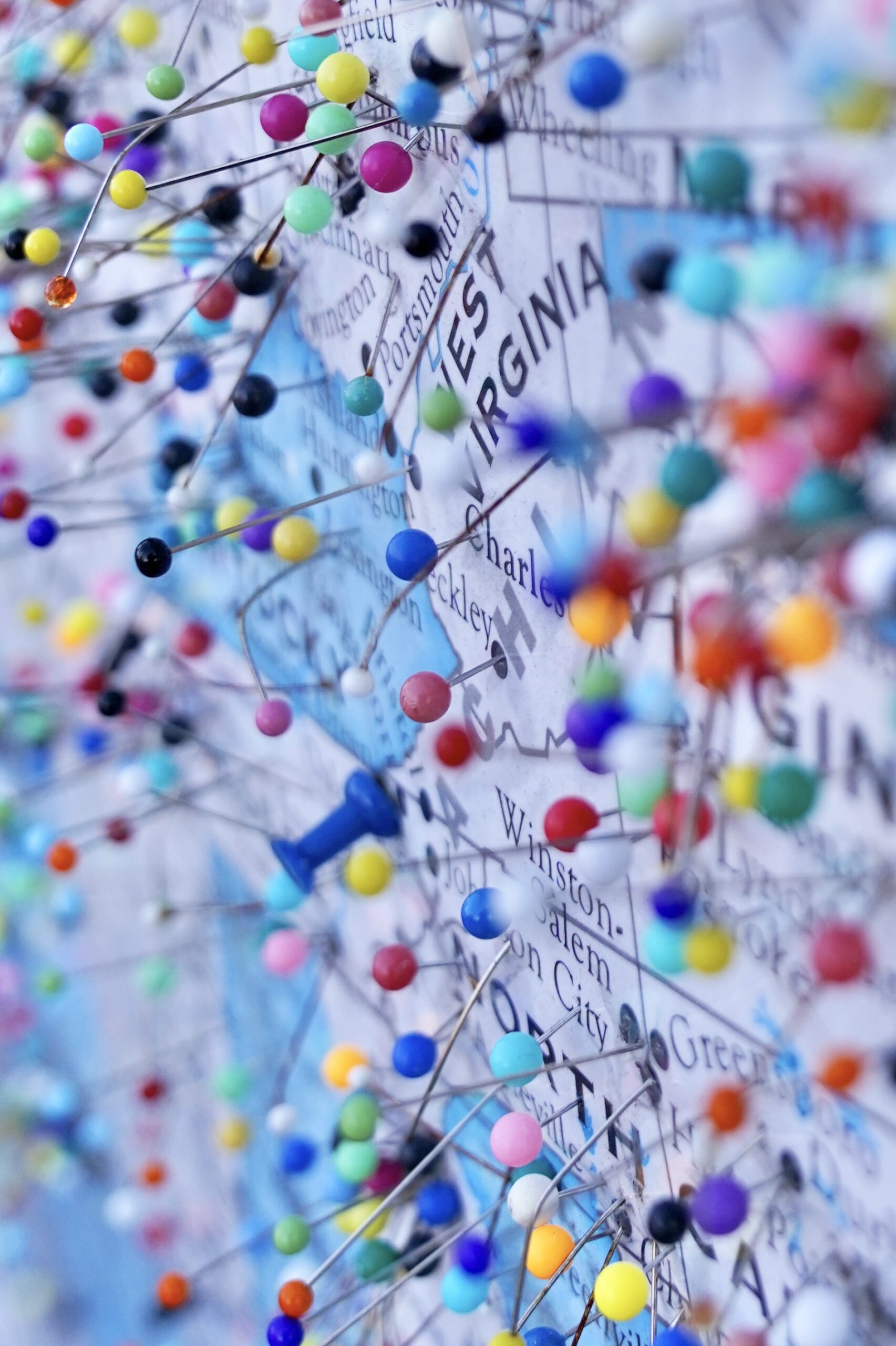
National Reach
A map at the intersection pinpoints the power of this momentA community project
In June of 2020, a grand and heartrending metal fist sculpture was installed at 38th and Chicago in Minneapolis, in memory of the late George Floyd.
In the immediate aftermath of Floyd’s death, while the rest of America entered a new wave of social justice activism, the Powderhorn community in Minneapolis searched for ways to express their grief, anger, and love.
“Right off the bat, people started to create a memorial at that intersection. Offerings, candles, pictures, murals… and then it kind of kept evolving to grow bigger and bigger. People began planting flowers. What beauty and symbolism in putting something that is living where life was lost. In putting something living where we want to see growth.” recalls Seven, the Minnesotan metal worker who led the sculpture’s construction.
SETTING THE SCENE
I’m sitting in a classroom at the Chicago Avenue Fire Arts Center (CAFAC). It’s been one year since George Floyd’s death, and one year since Seven’s team took a community-built, wooden version of the memorial fist and transformed it into something more permanent.
Years ago, my partner Ryan and I purchased a home on Park Avenue in South Minneapolis, just around the corner from 38th and Chicago, the intersection where, years later, George Floyd would be tragically killed by the police in May of 2020.
We purchased the home from a 101 year old man who’d lived there for over 70 years. We’d visit him in the nursing home and he’d tell us stories about the house and the neighborhood, which made us grow even more attached to the location. When a body shop came up for sale at 38th and Chicago, we, along with four of our neighbors, decided to purchase the building. Thanks to a partnership with Artspace (a nonprofit arts developer), we transformed what had been an original silent movie house into the CAFAC.
It was a labor of love, so although Ryan and I had moved out of the neighborhood and left the CAFAC board by 2020, we remained tied to the community. This is how I was first introduced to Seven.
“I’m from Winona, Minnesota, actually. I’ve been welding and fabricating for almost 20 years now at this point. I really started in the marine and industrial side, the manufacturing side of metal fabrication.
It wasn’t really until I met Heather 10 years ago that I was able to explore the artistic side of things. My job is to coalesce someone’s vision with metal. I bring whatever that vision into fruition. It’s kind of a combination of the ultimate act of customer service for somebody.
This isn’t about me creating sculptures for myself. This is me being able to support others, inspire others. I really, really love doing this and being able to work on projects for our community and for our city.”
When approached by an artist, Seven has to do more than just figure out how to construct the final piece out of metal. Their job is to consider things like textures, lighting, patinas, curvatures, and scale. As they describe it, they have the tools and the language and the craft to extract a vision out of their clients.
The wooden fist installation was first envisioned by Jordan Powell Karis. Within just a day or two, Jordan and his friends constructed the wooden fist and gave it as their own offering to what had now become the George Floyd Square.
In his search for a more permanent solution, Jordan got connected with the Chicago Avenue Fire Arts Center. That’s when Heather contacted Seven to see if they would lend a hand.
“We met up within days, because we had a tight deadline. We wanted it done by MLK day.”
A modest community donation paid for the materials, and Seven assembled a volunteer team of fabricators to pitch in. Within a week, work had begun.
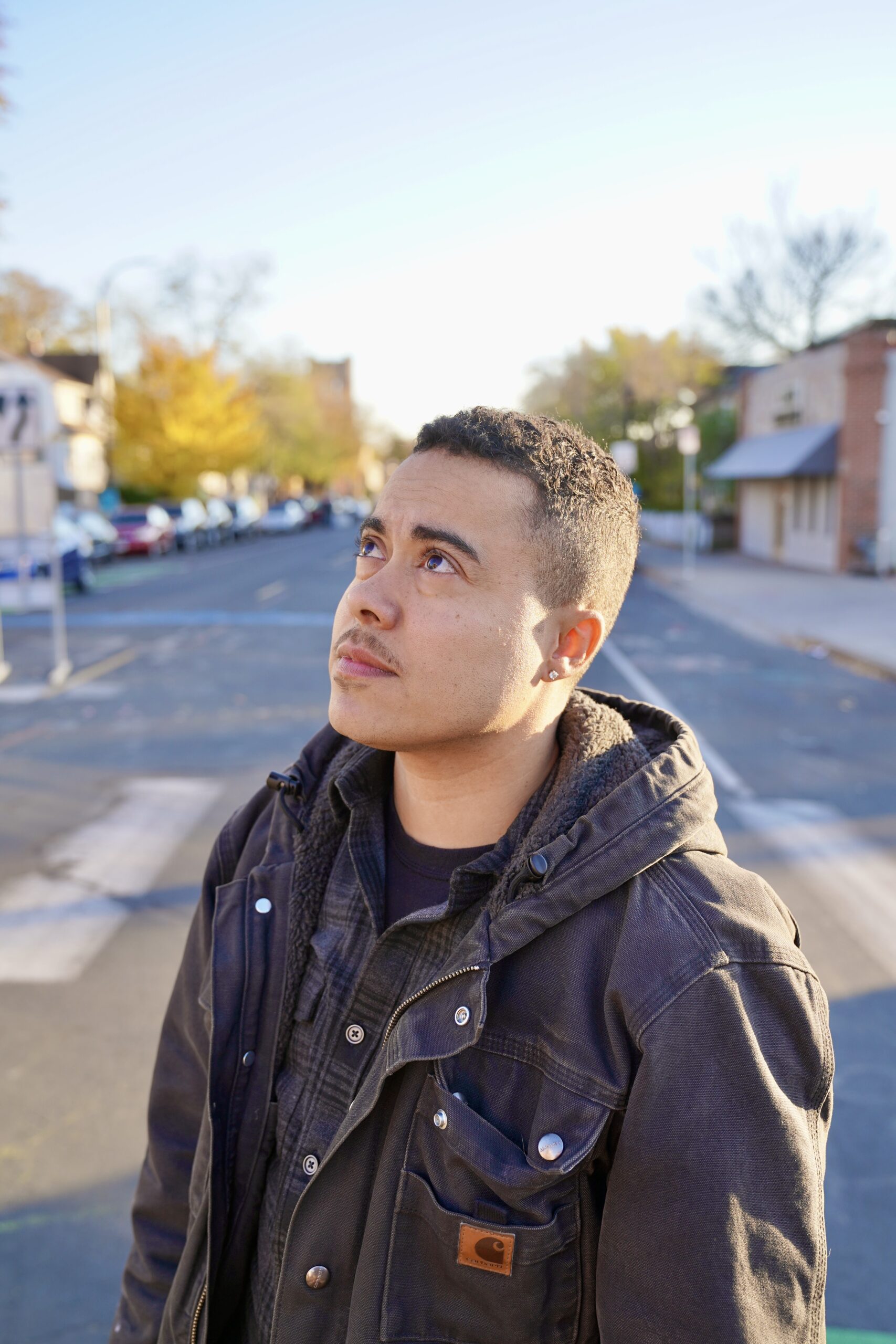
Looking Up
Seven standing in front of the sculpture“We of course wanted it to look as much like the wood one as possible. We absolutely ran into roadblocks, just like on every single other project. There’s nothing more frustrating than having a vision in your mind and not being able to physically execute that thing. You hit a wall and emotions come because you’re frustrated.”
When Seven is frustrated, they believe in stepping away. Rather than wasting energy — a precious and valuable resource — they move on to another part of the piece or even another part of the fabrication process.
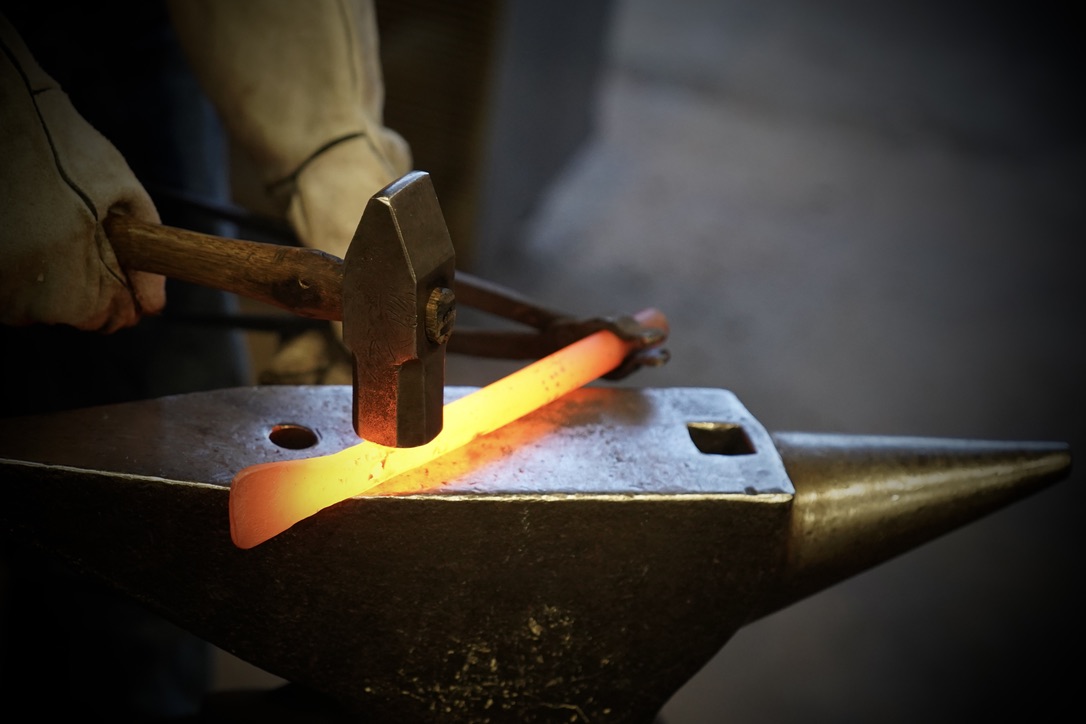
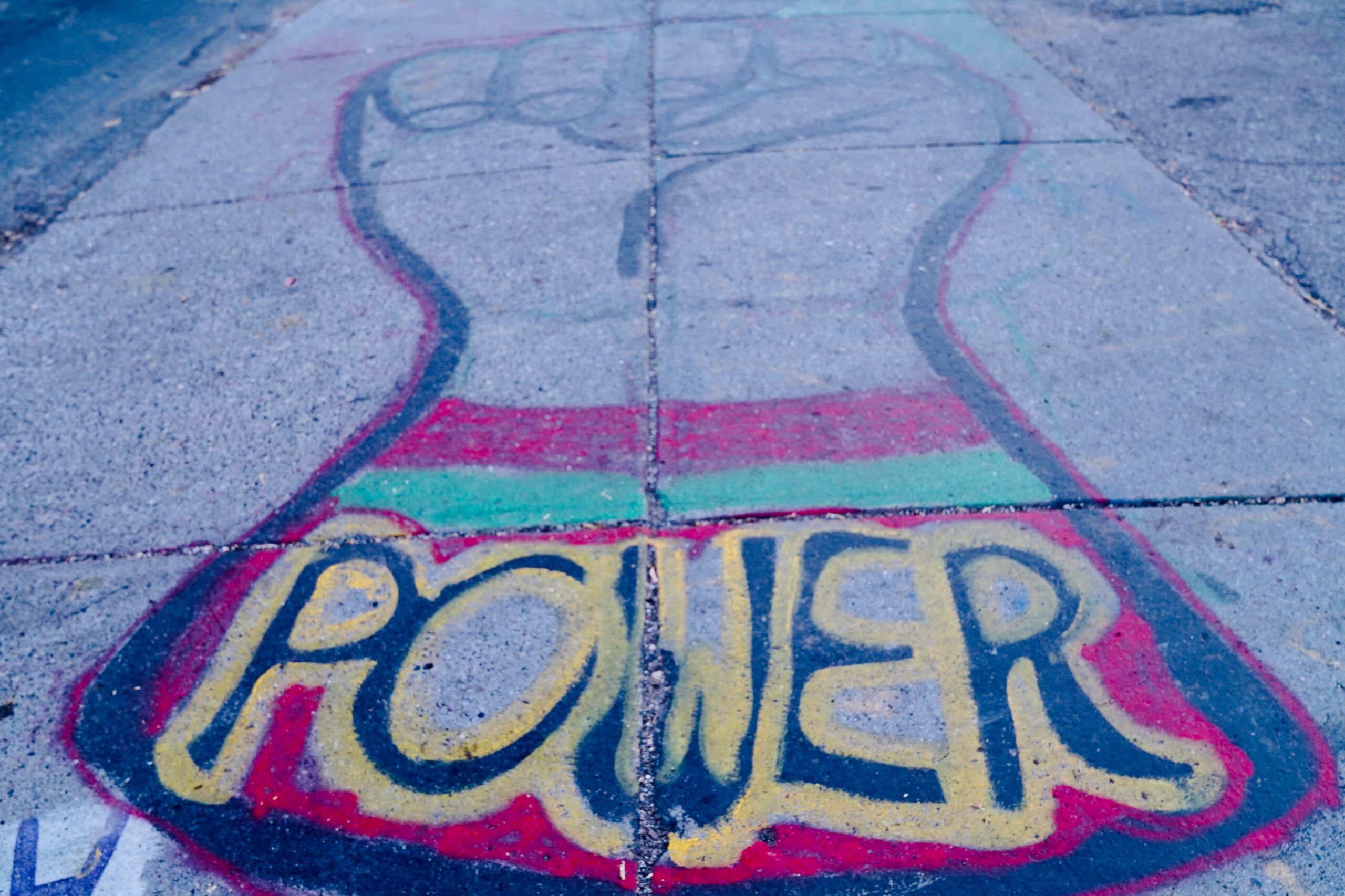
Rest In Power
Art and makeshift memorials fill the intersectionWhen it came time to install the fist in it’s final home, Seven was profoundly touched yet again when the community came together to make it happen quickly.
“They’re holding panels for us as we fasten it into place. People brought hot food. Many hands literally came together to support this project and to say this is ours. And it’s still ours. It’s still there.”
“It was such a healthy output to collectively heal together by making offerings, making speeches, playing music, feeding one another. All of those things were part of the healing and the grieving process.”
“I think everybody is capable of expressing emotions and things that they can’t give words to. And that’s the beauty, the beauty of art, right?”
After our conversation, the sun was setting. Seven and I took a walk through the intersection, visiting all the tributes and memorials, talking with people giving away books, handing me seedlings to plant and freely doling out a wealth of hugs. Visiting CAFAC for the first time since leaving the neighborhood was bittersweet. So much has happened and so many things forever changed. But one thing that remains are the tough, funny, and fiercely loyal people that live and work in this neighborhood. What happened was a tragedy, but seeing our little art center being a small part of the healing process for the nation is something I’ll never forget.
“The beautiful things that have come from this really horrific time in Minneapolis history has shown that our community is great. Our community is kind. Our community is thoughtful.
It’s like Stonewall, it’s like, you know, MLK, walking the bridge, you know, it’s like, there are just moments that have happened in our society that are just these, you know, flashpoints of change. And this is one of them.”
— By Montana Scheff
_______________________________
This interview is a part of Whittier Friends, a conversation series where we sit down with fellow creatives to dig deep and discuss what it’s like to live a creative life. Subscribe to follow along.
Learn more about the Chicago Avenue Fire Arts Center: cafac.org, @fireartscenter
Are you an interesting person doing interesting things? Or does this describe someone you know? Message me! I’d love to hear from you. We are always looking for more people and more stories to inspire.
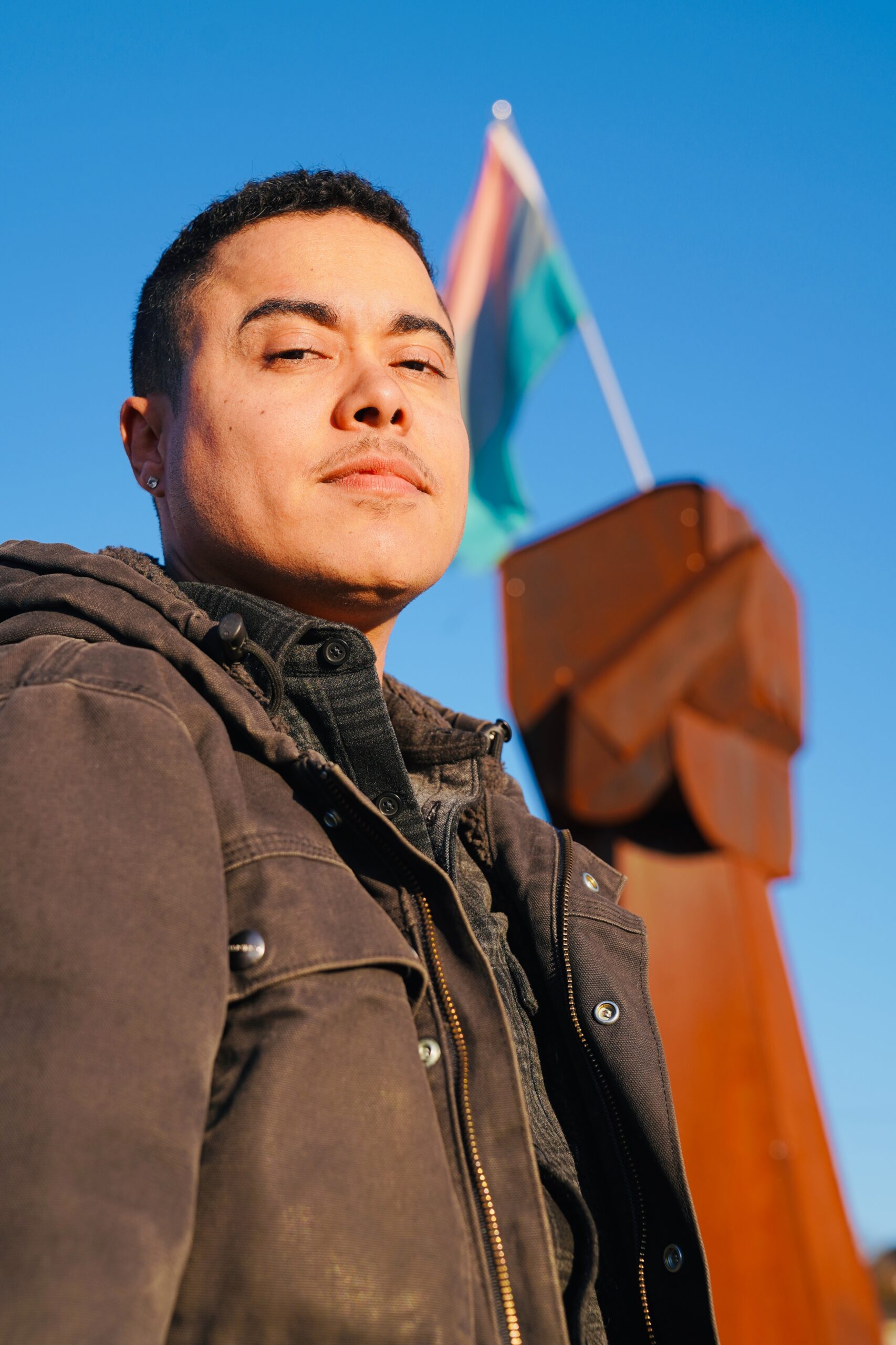
Taking Pride
The sculpture has become the heart of the intersectionsnapshots
